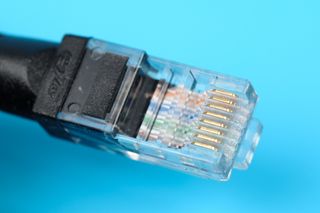The digital divide and homework gap persist despite intense efforts from schools, districts, and municipalities across the country to close these since the start of the pandemic.
Approximately 16 million students across the U.S. and 400,000 teachers do not have adequate internet or device access at home according to reports from Common Sense Media.
“Even in the best states that have the smallest digital divides, one in four students are still in the K-12 digital divide,” says Amina Fazlullah, senior director of Equity Policy at Common Sense Media.
This is despite efforts to provide all students devices and access through a variety of creative means including hotspot-enabled mobile buses, municipality-owned broadband, and even a pilot program that provided internet via a drone.
“Yes, a lot of devices went out,” says Angela Siefer, executive director of the National Digital Inclusion Alliance. “Not all those kids are gonna be able to keep them over the summer, though. And a lot of those devices are pretty locked down to make managing them more reasonable for the district.”
She adds, “We don't have enough devices out for adults, for households in general, or for kids when they're not doing schoolwork.”
This lack of whole-family access leads to a “knowledge gap” that creates a digital divide even when a student officially has device access. In addition, devices vary in quality and will break and/or become outdated eventually.
“Whatever you did two years ago, it doesn't necessarily mean that you're good right now,” Fazlullah says.
However, the events of the past two-plus years have helped raise awareness of the problems around the digital divide.
Funding and the Digital Divide
The Emergency Connectivity Fund (ECF) allocated $7.1 billion for school connectivity through the American Rescue Plan Act of 2021, and has connected more than 12 million students so far. However, these funds are currently temporary.
Common Sense Media advocates for creating a permanent fund. “We estimate it will cost about $6 to $11 billion in that first year,” Fazlullah says. “Then we had said that an additional $4 to $8 billion annually would be required to permanently address the K-12 digital divide.”
As high as this price might sound on paper, Common Sense Media estimates that it would save money overall because students without connectivity do less well in school, and ultimately, contribute less to the U.S. economy.
Existing funding could also sometimes be put to better use. The Federal Communications Commission provides need-based access to households that qualify through its Affordable Connectivity Program. The program can be used for mobile data or a wireline connection but is limited to one discount per household. Many opt for the mobile data connection except it often provides less value.
“Using ACP for a wireline connection means they do not have the restrictive data cap that often comes with a mobile data plan and it usually has higher capacity to support multiple household members being online,” Siefer says. She’d like more outreach around this topic to help people make informed decisions about their connectivity.
Knowledge as Needed as Connectivity
In addition to providing more households with connectivity, schools and municipalities need to support students and their families with better digital training, say advocates.
“It's not enough just to have the students know how to do what they need to do,” says Daniel Noyes, co-CEO of Tech Goes Home. “You've got to have parental or caregiver involvement. If you get a parent or a caregiver more involved in their kid's education, that student will do better.”
The need for parental knowledge of technology became abundantly clear during the pandemic. “All of a sudden education was primarily in a digital world, and you've got adults who have no clue what the digital world is. It's no surprise that those students suffered,” Noyes says.
Going forward, he says, municipalities, districts, and funding allotments should keep this knowledge gap in mind.
School leaders and classroom educators can also share stories of their struggles with connectivity in order to help bring more national and statewide attention to the issue. For example, Common Sense Media has a page for collecting these experiences.
Ultimately, Siefer says, society needs to realize that addressing the digital divide is an ongoing and evolving process.
“This is not a problem that we can solve quickly,” she says. “It's not a problem that we can solve once because technology is going to keep changing, and how we use technology is going to keep changing. The fact that we have broader inequities in society, those things mean we will always be struggling with the digital divide.”


